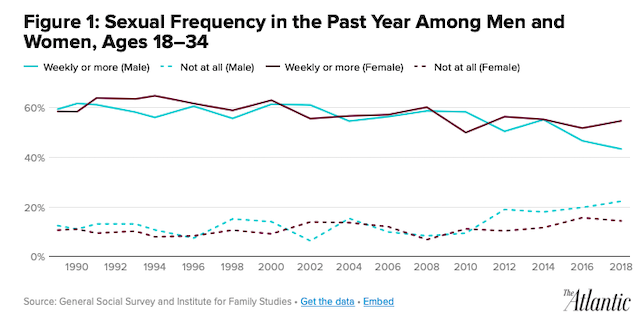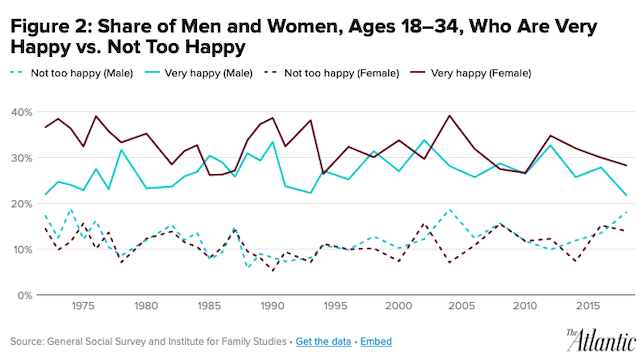Highlights
In 2018, happiness among young adults in America fell to a record low. The share of adults ages 18 to 34 reporting that they were“very happy” in life fell to 25 percent—the lowest level that the General Social Survey, a key barometer of American social life, has ever recorded for that population. Happiness fell most among young men—with only 22 percent of young men (and 28 percent of young women) reporting that they were “very happy” in 2018.

We wondered whether this trend was rooted in distinct shifts in young adults’ social ties—including what The Atlantic has called “the sex recession,” that is, a marked decline in sexual activity for this group in recent years. Human beings find meaning, direction, and purpose in and through our social relationships with others. We’re most happy when our ties with others are deep and strong. And, the research tells us that the ebb and flow of happiness in America is clearly linked to the quality and character of our social ties—including our friendships, community ties, and marriage. It’s also linked, specifically, to the frequency with which we have sex. In the antiseptic language of two economists who study happiness, “sexual activity enters strongly positively in happiness equations.”
So we investigated four indicators of sociability among today’s young adults—marriage, friendship, religious attendance, and sex—in an effort to explain the “happiness recession” among today’s young adults.

First, we looked at marriage. Controlling for basic demographics and other social characteristics, married young adults are about 75 percent more likely to report that they are very happy, compared with their peers who are not married, according to our analysis of the GSS, a nationally representative survey conducted by NORC at the University of Chicago. As it turns out, the share of young adults who are married has fallen from 59 percent in 1972 to 28 percent in 2018. The decline has been similar for men and women, although from 2016 to 2018 the share of married men fell, while the share of married women rose.
Data on cohabitation are not available for as long a period but suggest that the trend in all coupling is probably less steeply negative, though still drifting downward over time. Less coupling, then, probably explains some of the decline in happiness among young adults.
Continue reading in The Atlantic . . . .











